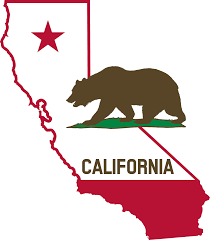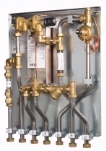California considers HFC ban
USA – The Air Resources Board is proposing actions to cut HFC emissions by 40% by 2030, compared to 2013 levels. Meeting these targets will help to achieve the Governor’s goal to cut all greenhouse gas emissions in California by 40% below 1990 levels by 2030 and help to meet Federal air quality standards for 2031 and beyond.
“The impact of these super pollutants is real and the fight against climate change must include a strategy to aggressively reduce them,” said California Governor Edmund G. Brown.
Following the publication of the Concept Paper in May 2015, which was followed by a Draft Strategy and subsequent stakeholder comments, the Proposed Strategy includes the following key measures to address the use of HFCs:
- A ban on the use of HFCs with GWP > 150 in new non-residential refrigeration (commerA ban on the use of HFCs with GWP > 150 in new residential refrigeration as of 1 January 2021;cial and industrial) as of 1 January 2020;
- A ban on the use of HFCs with GWP > 150 in new residential refrigeration as of 1 January 2021;
- A ban on the use of HFCs with GWP > 750 in new air conditioning (residential, commercial, industrial) as of 1 January 2021;
- Prohibiting the sale of new refrigerants with GWP > 2500 as of 1 January 2020 (recycled / reclaimed refrigerants would be exempt);
- Financial incentives to help accelerate uptake of low-GWP refrigeration equipment, and;
- Potential California-wide HFC phase-down in the absence of an international agreement in 2016.
The Proposed Strategy notes that, “early action, ahead of some of the phase down schedules being proposed internationally, can avoid locking-in the use of high-GWP refrigerants in new or retrofitted systems in the coming years”.
“Without early action to reduce unnecessary emissions now and into the future, the State [of California] would need to take additional — likely more costly — steps to meet its 2030 climate targets,” the document reads.
Developing an incentive programme is particularly important to help the industry transition towards low-GWP refrigeration technology, such as CO2, ammonia and hydrocarbons. The Governor’s proposed 2016-2017 budget includes $20 million for incentives to reduce HFC emissions from refrigerants. The paper notes that substantial progress has already been made regarding the safe use of natural refrigerants in North America and other parts of the world. For example, at least 300,000 HFC-free light commercial refrigeration units have been deployed in North America, with more than 250 stores using CO2 systems and over 250 ‘next-generation’ small-charge ammonia industrial refrigeration systems.
In addition, the paper points out that “switching to low-GWP refrigerants can also improve the energy efficiency of refrigeration and air conditioning equipment, which can help to cut electricity bills throughout the State”.















